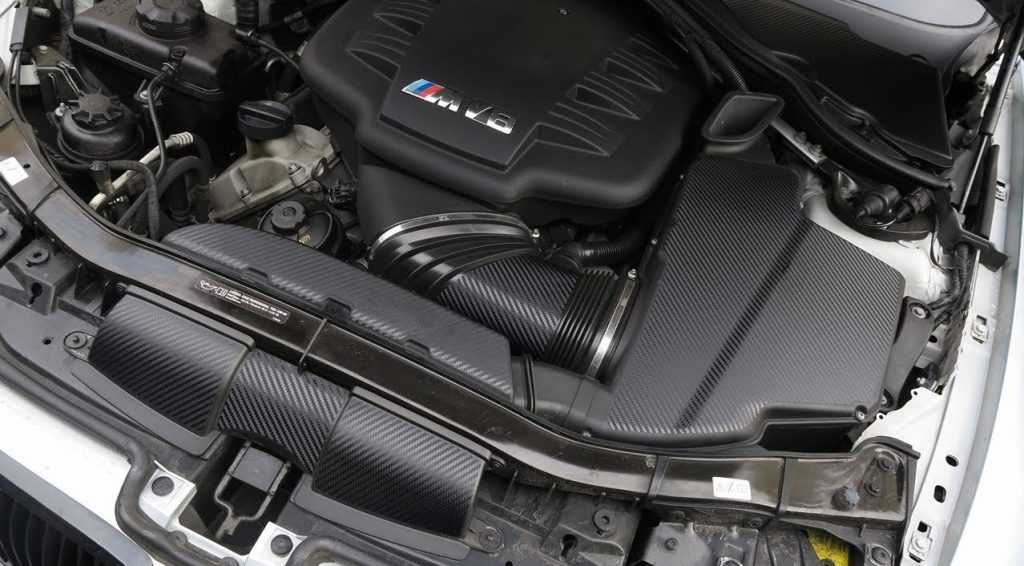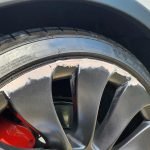Vinyl wrapping has revolutionized the automotive customization scene, providing enthusiasts with a dynamic way to express their individuality on the road. Beyond the aesthetic appeal, wrapping your engine cover in vinyl also serves as a protective shield, fending off wear and tear from the elements. In this extensive guide, we’ll explore the ins and outs of vinyl wrapping, offering valuable insights and tips for both the DIY enthusiast and those considering professional assistance.
Table of Contents
- Understanding the Basics of Vinyl Wrapping
- Can You Vinyl Wrap Your Engine Cover Yourself?
- Choosing the Right Vinyl Wrap
- Maintenance and Care
- Professional Vinyl Wrapping Services
- Addressing Common Concerns
- Cost Considerations
- Expert Tips for Flawless Vinyl Wrapping
- 1. Perfecting the Prep: Cleanliness is Key
- 2. Temperature Matters: Optimal Conditions for Wrapping
- 3. Invest in Quality Tools: Squeegees and Heat Guns
- 4. Take Your Time: Patience is a Virtue
- 5. Wrap Around Edges with Care: Avoiding Lifts and Peels
- 6. Mind the Seams: Invisible Transitions
- 7. Post-Application Inspection: Detail-Oriented Evaluation
- 8. Consider Professional Removal: A Clean Slate
- 9. Experiment with Color Combinations: The Art of Contrast
- 10. Explore Protective Coatings: Extending Longevity
- Elevate Your Vinyl Wrapping Experience
- FAQs About Vinyl Wrapping Your Engine Cover
- 1. What is Vinyl Wrapping, and Can I Do It Myself?
- 2. How Does Vinyl Wrapping Protect My Engine Cover?
- 3. Can I Choose Any Color or Finish for Vinyl Wrapping?
- 4. Are There Different Types of Vinyl Wraps?
- 5. What Tools Do I Need for DIY Vinyl Wrapping?
- 6. How Do I Remove Vinyl Wrap? Is It Reversible?
- 7. Does Vinyl Wrapping Impact Engine Performance or Temperature?
- 8. Should I Seek Professional Help or DIY Vinyl Wrapping?
- 9. How Do I Prevent Wrinkles and Bubbles in the Vinyl?
- 10. Can I Vinyl Wrap Only Parts of My Engine Cover?
- Navigating the World of Vinyl Wrapping
- Conclusion
Understanding the Basics of Vinyl Wrapping
1. Express Your Style with Versatile Options
Vinyl wrapping opens up a kaleidoscope of possibilities for personalizing your vehicle. Whether you’re drawn to vibrant, eye-catching colors, sleek matte finishes, or the mirror-like shine of chrome, the choices are nearly limitless. This level of customization allows you to make a bold statement on the road, turning heads and showcasing your unique taste.
2. Protecting Your Engine Cover from the Elements
Beyond the visual appeal, vinyl wrapping serves a practical purpose—protecting your engine cover from the harsh realities of the road. Road debris, stone chips, and unpredictable weather can take a toll on your car’s exterior. A well-applied vinyl wrap acts as a barrier, preserving the factory paint and ensuring your engine components remain in top condition.
Can You Vinyl Wrap Your Engine Cover Yourself?
3. DIY Vinyl Wrapping: A Step-by-Step Guide for Success
Embarking on a DIY vinyl wrapping project requires careful preparation and attention to detail. Here’s a comprehensive guide to help you navigate the process:
Gather the Necessary Materials
Before you start, ensure you have all the essential tools: high-quality vinyl wrap, a heat gun, a squeegee, and a sharp blade for precision trimming.
Thoroughly Clean the Engine Cover
Proper adhesion begins with a clean surface. Remove any dirt, grease, or residue from the engine cover using a gentle cleanser.
Measure and Cut the Vinyl Wrap
Accurate measurements are crucial. Cut the vinyl wrap with some excess around the edges for seamless trimming.
Apply Heat for a Secure Fit
Use the heat gun to soften the vinyl, allowing it to conform to the curves of the engine cover. Smooth out any air bubbles using the squeegee.
While the satisfaction of a DIY project is unparalleled, challenges may arise. Here are common hurdles and tips to overcome them:
Challenges:
- Achieving a Smooth Finish Without Wrinkles.
- Ensuring Proper Adhesion Around Complex Shapes.
Tips:
- Practice on Small Surfaces Before Tackling the Engine Cover.
- Work in a Dust-Free Environment to Prevent Imperfections.
Choosing the Right Vinyl Wrap
5. Types of Vinyl Finishes: Matching Your Style
The world of vinyl wraps offers various finishes to cater to diverse tastes. Consider these options:
Matte Finish:
A non-reflective surface that exudes sophistication and modernity.
Gloss Finish:
Classic and eye-catching, gloss finishes provide a high-shine appearance.
Satin Finish:
A middle ground between matte and gloss, offering a subtle sheen.
Chrome Finish:
For those who crave attention, chrome finishes provide a mirror-like reflection. (See Also: How Long Does Carnauba Wax Last? Your Ultimate Guide to Car Care)
6. Quality Matters: Selecting the Best Vinyl for Durability
Investing in high-quality vinyl is essential for a long-lasting and visually appealing result. Research reputable brands, read user reviews, and consider the specific demands of your driving environment before making a purchase.
Maintenance and Care
7. Preserving the Vinyl Wrap: Tips for Longevity
To ensure the longevity of your vinyl-wrapped engine cover, adopt these maintenance practices:
Use a Gentle Soap for Washing
Avoid abrasive cleaners that may damage the wrap. A mild soap and water solution will suffice.
Opt for a Soft Microfiber Cloth
When cleaning your car, use a soft microfiber cloth to prevent scratches on the delicate vinyl surface.
Professional Vinyl Wrapping Services
8. When to Seek Professional Help: Making an Informed Decision
While the allure of a DIY project is undeniable, certain situations warrant the expertise of professional installers:
Complex Designs:
Intricate designs may pose challenges for beginners, making professional assistance a wise choice.
Time Constraints:
If time is of the essence, professional installers can provide a quicker turnaround, ensuring a flawless finish without the learning curve.
Addressing Common Concerns
9. Heat and Engine Performance: Dispelling Myths
Some enthusiasts worry that vinyl wrapping might affect engine temperatures. Here’s the truth:
- Vinyl wrapping does not significantly impact engine performance or temperatures.
- Ensure proper ventilation during installation to prevent overheating concerns.
10. Removing the Vinyl Wrap: A Reversible Process
Change your mind or opt for a new design? Removing a vinyl wrap is a straightforward process:
- Use heat to loosen the adhesive, making it easier to peel off the vinyl without damaging the paint.
- Any leftover adhesive residue can be cleaned with a mild adhesive remover.
Cost Considerations
11. DIY vs. Professional Cost Analysis: Making Smart Choices
Deciding between a DIY project and professional installation involves considering costs and benefits:
- Evaluate the cost of materials and your time for a DIY project.
- Compare it to the expense of professional installation for an informed decision based on your budget and preferences.
Expert Tips for Flawless Vinyl Wrapping
Embarking on a vinyl wrapping journey for your engine cover? To ensure a flawless result, consider these expert tips that go beyond the basics. Whether you’re a DIY enthusiast or seeking professional assistance, these insights will elevate your vinyl wrapping game and help you achieve a customized look that turns heads on the road.
1. Perfecting the Prep: Cleanliness is Key
Before applying the vinyl wrap, ensure your engine cover is impeccably clean. Any dust, debris, or residue can affect adhesion and compromise the final result. Invest time in thorough cleaning, using a gentle cleanser to prepare the surface for the wrap.
2. Temperature Matters: Optimal Conditions for Wrapping
Vinyl wrapping is most effective within a specific temperature range. Aim for a moderate climate, avoiding extreme heat or cold. Extreme temperatures can affect the flexibility of the vinyl, making it challenging to achieve a smooth and wrinkle-free finish. (See Also: Can You Use Tire Shine On Plastic Trim? Tips for Safe and Effective Trim Restoration)
3. Invest in Quality Tools: Squeegees and Heat Guns
High-quality tools are instrumental in achieving professional-looking results. Invest in a reliable squeegee to smooth out the vinyl and eliminate air bubbles effectively. Additionally, a good quality heat gun ensures the vinyl becomes pliable, conforming seamlessly to the contours of the engine cover.
4. Take Your Time: Patience is a Virtue
Rushing through the vinyl wrapping process can lead to mistakes and subpar results. Take your time to ensure precision at every step. Whether you’re cutting the vinyl, applying heat, or smoothing out imperfections, a patient approach pays off in the form of a polished and professional finish.
5. Wrap Around Edges with Care: Avoiding Lifts and Peels
Edges pose a common challenge in vinyl wrapping. Ensure the vinyl is wrapped around edges carefully to prevent lifts and peels over time. Using additional heat during this step can enhance adhesion and create a seamless transition between the top and sides of the engine cover.
6. Mind the Seams: Invisible Transitions
When working with multiple vinyl sheets or pieces, pay close attention to seams. Aim for seamless transitions between sections to create a cohesive and polished appearance. Properly align and overlap the vinyl for an almost invisible join.
7. Post-Application Inspection: Detail-Oriented Evaluation
Once the vinyl is applied, conduct a thorough inspection. Check for any bubbles, wrinkles, or imperfections. Addressing these issues promptly ensures a high-quality finish. Small details make a significant difference in the overall visual impact.
8. Consider Professional Removal: A Clean Slate
If you decide to change your vinyl wrap or return to the original paint, consider professional removal. Professionals use techniques to minimize any potential damage to the underlying paint, ensuring a clean slate for your next customization adventure.
9. Experiment with Color Combinations: The Art of Contrast
Get creative with color combinations to enhance the visual appeal of your car. Consider contrasting colors or complementary tones to make specific features, like the engine cover, stand out. Experimentation can lead to a truly one-of-a-kind look.
10. Explore Protective Coatings: Extending Longevity
To further safeguard your vinyl-wrapped engine cover, explore protective coatings. These coatings add an extra layer of defense against scratches, UV rays, and environmental factors. Choose a coating compatible with vinyl for optimal results.
Elevate Your Vinyl Wrapping Experience
By incorporating these expert tips into your vinyl wrapping endeavor, you’ll not only achieve a stunning aesthetic transformation but also ensure the longevity and durability of your customized engine cover. Remember, vinyl wrapping is an art form that rewards precision, creativity, and attention to detail. Enjoy the process, embrace your individuality, and let your car become a canvas for your unique style on the road.
FAQs About Vinyl Wrapping Your Engine Cover
Curious about vinyl wrapping your engine cover? Here are answers to some frequently asked questions to guide you through the process. Whether you’re a first-time DIYer or considering professional assistance, these FAQs cover key aspects of vinyl wrapping, from the basics to troubleshooting common concerns.
1. What is Vinyl Wrapping, and Can I Do It Myself?
Vinyl wrapping is the process of applying a specialized adhesive film to the surface of your engine cover. Yes, you can do it yourself! With the right tools, materials, and patience, DIY vinyl wrapping is a rewarding project.
2. How Does Vinyl Wrapping Protect My Engine Cover?
Vinyl wrapping acts as a protective layer, shielding your engine cover from road debris, stone chips, and weather elements. It preserves the original paint and enhances the longevity of your engine components. (See Also: Will IPA Remove Ceramic Coating? Unveiling the Truth about Using Isopropyl Alcohol)
3. Can I Choose Any Color or Finish for Vinyl Wrapping?
Absolutely! Vinyl wrapping offers a vast array of colors and finishes, including matte, gloss, satin, and chrome. You have the flexibility to express your style and choose a look that complements your vehicle.
4. Are There Different Types of Vinyl Wraps?
Yes, various types of vinyl wraps cater to different preferences. Matte finishes offer a non-reflective, sophisticated look, while gloss finishes provide a classic, high-shine appearance. Satin finishes strike a balance, and chrome finishes deliver a mirror-like reflection.
5. What Tools Do I Need for DIY Vinyl Wrapping?
Essential tools include high-quality vinyl wrap, a heat gun, a squeegee, and a sharp blade for trimming. These tools ensure a smooth and professional-looking finish.
6. How Do I Remove Vinyl Wrap? Is It Reversible?
Removing vinyl wrap is a reversible process. Use heat to loosen the adhesive, making it easier to peel off the vinyl without damaging the paint. Any leftover adhesive residue can be cleaned with a mild adhesive remover.
7. Does Vinyl Wrapping Impact Engine Performance or Temperature?
No, vinyl wrapping does not significantly impact engine performance or temperature. Ensure proper ventilation during installation to prevent overheating concerns.
8. Should I Seek Professional Help or DIY Vinyl Wrapping?
The choice between DIY and professional installation depends on factors like the complexity of the design and your time constraints. Professionals can handle intricate designs and offer a quicker turnaround.
9. How Do I Prevent Wrinkles and Bubbles in the Vinyl?
Preventing wrinkles and bubbles requires attention to detail. Ensure a clean surface, use proper techniques for heat application, and practice on small surfaces before tackling the engine cover.
10. Can I Vinyl Wrap Only Parts of My Engine Cover?
Yes, you can vinyl wrap specific parts or sections of your engine cover. Ensure proper alignment and overlapping for a seamless transition between wrapped and unwrapped areas.
Vinyl wrapping your engine cover opens up a world of creative possibilities. Whether you’re diving into a DIY project or seeking professional assistance, these FAQs provide valuable insights to guide you through the process. Unleash your creativity, protect your engine cover, and enjoy the journey of transforming your vehicle’s appearance.
Conclusion
In conclusion, the question “Can you vinyl wrap your engine cover?” is met with a resounding yes. This creative and practical customization option empowers car enthusiasts to showcase their personality on the road. Whether you embark on a DIY journey or enlist the help of professionals, the key is to enjoy the process and relish in the transformation of your car’s appearance. So, with the knowledge and inspiration gained from this guide, it’s time to rev up your creativity and give your ride a makeover that truly stands out on the streets!


